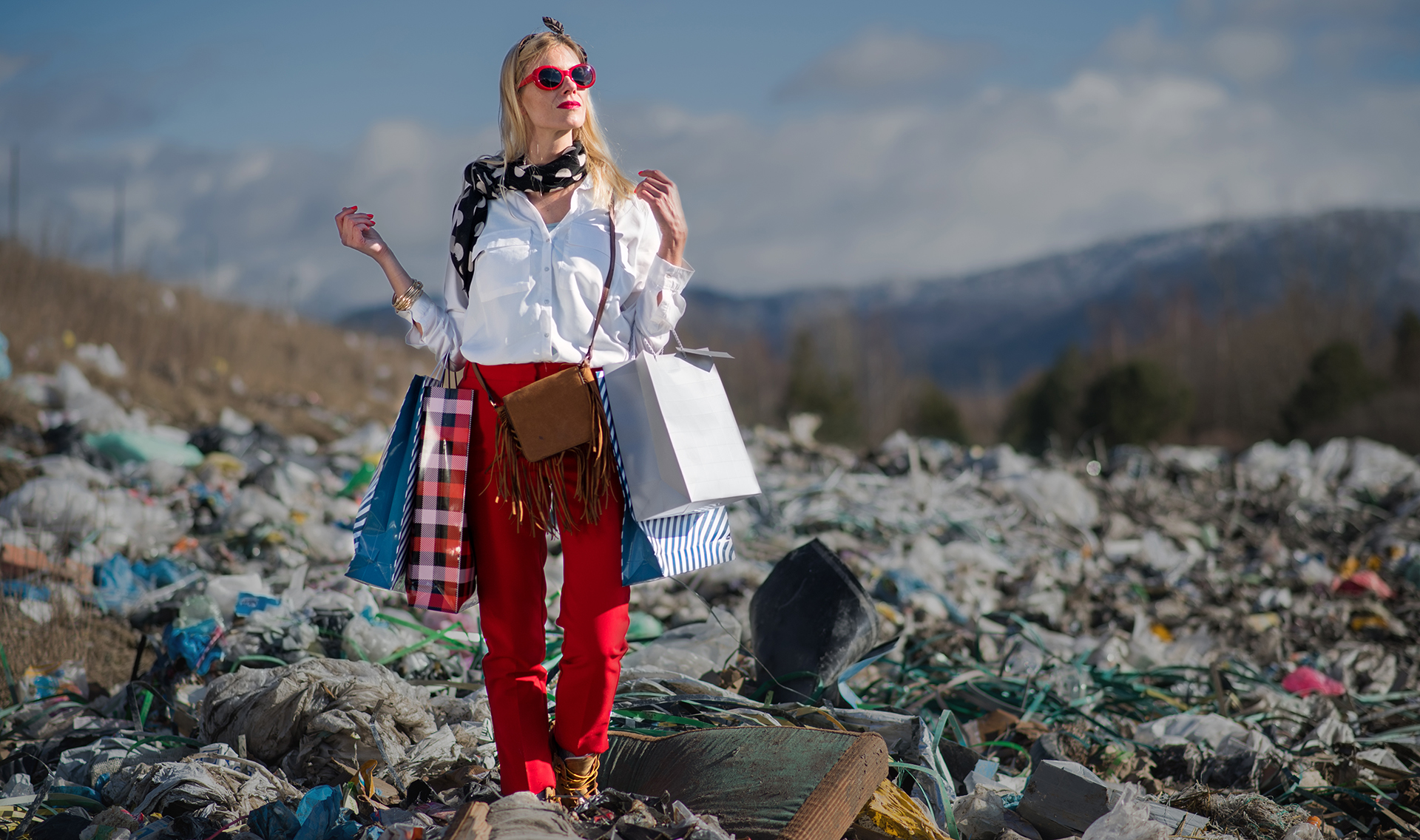
Social Media: Influencers and Overconsumption
by Bria Zegarelli
JANUARY 23, 2024
In the age of technology and social media, the influencer has progressed into an incredibly prevalent force in shaping culture, especially for younger generations. One area of their influence is consumerism and fashion, which has unfortunately led to a cycle of overconsumption. Not only do content creators themselves contribute to this, but they, in turn, encourage other people to do so as well — whether they realize it or not.
Many influencers have become well-known for their clothing or product hauls. They buy clothes or products in bulk to review them, but most of the time, this leads to a lot of waste because they do not actually use all of the things they buy and end up throwing them out. Additionally, to save costs, influencers will often buy from and promote fast fashion stores, which influences the general public to buy from them as well. However, this mass purchasing from these fast fashion stores not only perpetuates the bad work conditions of the individuals working for these companies, but it also adds damage to the environment because these clothes are made with materials that are not good once they are thrown away.
PR packages are another contributor to this waste because influencers end up with more products than they know what to do with. It makes sense for companies to want to promote their products, but this leads to a cycle of overconsumption and waste because the products in the packages are usually only used once or not used at all. Personally, I have seen so many videos of influencers with drawer upon drawer of an endless amount of makeup, and the influencers blatantly say that they do not use all of it or that they just end up throwing a lot of it away.
Obviously, fashion and makeup influencers are known for their creation and perpetuation of certain trends and microtrends. They are the ones saying what is popular and what people “should” be buying. Because influencers are placed on a pedestal, people get caught in a cycle of buying very specific clothing items and products just because an influencer says they are good, leading to impulse buying. These products will often only be used once or only a few times, and they are eventually thrown away once the trends fade. This cycle also connects back to fast fashion because a lot of this unique clothing is only found on websites that cheaply pump out products that adhere to what is in style. There is overall a lack of thoughtfulness when purchasing products anymore, and this is very much a result of social media culture.
Whether they realize it or not, influencers are also part of the mindset that consumerism directly correlates with happiness or fulfillment. There is the mindset of, “If you have [xyz], it will completely improve your life and therefore your happiness.” While buying different products and clothes can be fun and enjoyable, there is no reason to think that they will bring you foundational, inherent fulfillment or happiness in your life.
However, especially on Tiktok, the promotion of different products as “changing your life” is constant, and this can be especially harmful when it is mixed with beauty standards. Because people will buy these products with the intention of fitting into certain beauty standards, this cycle perpetuates the harmful notion that buying however many products will completely change one’s appearance, happiness, fulfillment, or overall life. This places too much value on things and products, therefore not promoting inner fulfillment or confidence, especially for younger kids who look up to influencers who happen to naturally fit certain standards.
Recently, there’s been talk of younger kids overbuying a lot of high-end products just because influencers recommend them or because they are on trend. This is contributing to the perpetuation of beauty standards, children using products that aren’t good or safe for their age group, buying for the purpose of aesthetics, and the association that consumerism equals happiness.
I also see a lot of videos of people buying so many extra products just because they are more “aesthetic” than the ones they already have. Additionally, I see a lot of videos regarding certain kitchen gadgets that may save a few seconds of time while cooking but are ultimately not needed. Both of these instances are examples of overconsumption due to social media influence.
However, certain influencers will make videos “de-influencing,” or talking about products that are highly promoted but are not needed. They also talk about popular products that they have personally used that are not worth it. On a certain level, this helps decrease the overconsumption that has been circling in recent years, but it is not enough to truly combat the issue.
Social media culture has undoubtedly perpetuated a cycle of overconsumption and consumerism, but with the right thoughtfulness and mindfulness when shopping, this problem has the potential to wane over time, especially if everyone becomes much more conscious of what — and how — they are purchasing.

Leave A Comment